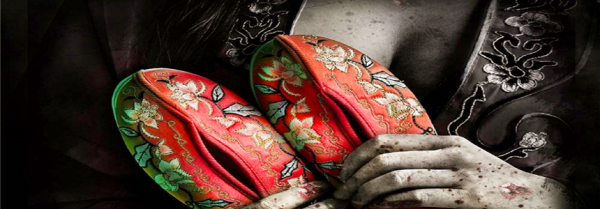In the dead of night in 1969, a man entered a paper factory in Southwest China. The factory hid banned books, arranged in mounds, waiting to be shredded into fine ribbons. But why should the books be destroyed and who gave the order?
Chairman Mao Zedong officially ended the Cultural Revolution in 1969, but its active phase lasted until at least 1971. During the ten years of great calamity, disparate forces and individuals in the entire country from Beijing to the southern borders with Vietnam – Mao loyalists, students, idealists, mobsters, and career politicians – all at odds with one another, were desperate to show devotion to the Great Leader. The man who sneaked into the paper factory that night wanted however to get his hands on one book forbidden by the Chairman.
The Golden Lotus (aka Plum in the Golden Vase) – Jin Ping Mei in Chinese – is considered the fifth classical novel after the Four Great Classical Novels. Its graphically explicit depiction of sexuality has garnered the book a level of notoriety in China akin to Fanny Hill. The first block-printed version was released in 1610. The present version contains one hundred chapters, amounting to over a thousand pages. Ever since its publication the book has been banned, even though various illegal copies have sold, bought, and circulated widely.
Composed in Wu dialect during the late Ming Dynasty (1368-1644), the author is known by the pseudonym “Scoffing Scholar of Lanling”. The story is not your typical Kong Fu entertainment. The unusual perspective describing female characters’ private lives and interior thoughts set an important precedent for a literary genre that had previously been dominated by a male mode of storytelling. The novel’s naturalistic strokes painted sexual culture in ancient China with boldness. Masochism, desire and death in a morally derelict and corrupt society where government affairs and businesses are profoundly entangled on so many different levels.

Reading the classic novel, I often imagined the author would put on a pair of silk shoes in a wide range of shades of red to write a convincing story. The story shows sympathy and compassion towards a group of women with complex personality, including concubines and prostitutes. The “scoffing Scholar” cried for every single one of them.
If the erotic imageries map the Chinese male mind with traditional biases, the rich descriptions of food dazzle equally both historically and artistically. I believe the novel may even have designed braised pig’s head, China’s first patented dish fit for franchising. However, the rhetorical and narrative functions of food and dining scenes present a particular focus on the female participants. Food and dining are used as a narrative device to reveal the female characters’ psychology and their interpersonal power dynamics, showing the female inner worlds with astonishing details.
The Chinese New Year starting from January 24, 2020 is the Year of Gold Rat. The Rat is not a negative sign according to the Chinese zodiac. The rat people are endowed with the power of accurate observation. Their wisdom and intelligence make them No.1 animal of the zodiac cycle. Rats like to be ahead of the game. They are at the forefront of the action. Could the author of Jin Ping Mei be a Rat king?
If you are a fan of my blog, please consider wearing a pair of red silk shoes to sparkle at the family banquet on the New Year’s Eve. It will definitely make the dark pink, moist braised pig’s head dish tastier and more unforgettable.
HAPPY NEW YEAR!
Also from my long-time collaborator, Belgian photographer Filip Naudts who will be in charge of the illustration for all my written pieces. All of Filip’s photos are modified in the fitting format. If you are interested in seeing the original or purchasing fine prints of Filip’s photography, you are welcome to reach out to me at julie@julieoyang.com.

